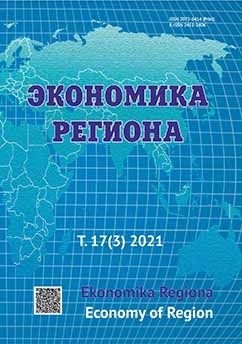Анализ макроэкономической динамики совокупной факторной производительности экономики России
Macroeconomic Dynamics of the Total Factor Productivity of the Russian Economy
Author(s): Sergey Alexandrovich MitsekSubject(s): Economy, National Economy, Business Economy / Management, Human Resources in Economy, Socio-Economic Research
Published by: Институт экономики Уральского отделения Российской академии наук
Keywords: total factor productivity; Russian economy; econometric model; macroeconomics; production function; fixed capital; number of employed; regions; types of economic activity; elasticity; multipliers;
Summary/Abstract: The growth rate of Russia’s total productivity has been slowing down significantly since 2008. The majority of relevant publications either describe an economic methodology or specifically focus on labour productivity. However, economic growth rates, as well as community welfare, largely depend on total factor productivity. The paper aims to determine the reasons for the slowdown in the growth of total factor productivity after 2008. This negative dynamics was assessed using a macroeconomic econometric model and estimates for Russian regions and types of economic activity. Elasticity of dependent variables was calculated based on econometric equations as well as multipliers of exogenous variables presented in the model. Ordinary and rank correlations between the variables were also examined. The calculations revealed that the stagnation of total factor productivity was caused by the misallocation of resources across industries and regions, de crease in aggregate demand, increase in capital goods prices (primarily due to rouble devaluation) and a slowdown in digital economy development. In turn, these trends were influenced by a decline in public investment and export prices, as well as a slowdown in population growth and liquidity. Simultaneously, growth of the world economy contributed to the demand for Russian export goods, preventing a decrease in productivity. The findings can be used for forecasting Russian economic trends and developing relevant policy measures. Further research will examine the role of human capital, energy intensity, climate and institutional factors in increasing the total productivity.
Journal: Экономика региона
- Issue Year: 17/2021
- Issue No: 3
- Page Range: 799-813
- Page Count: 15
- Language: Russian

